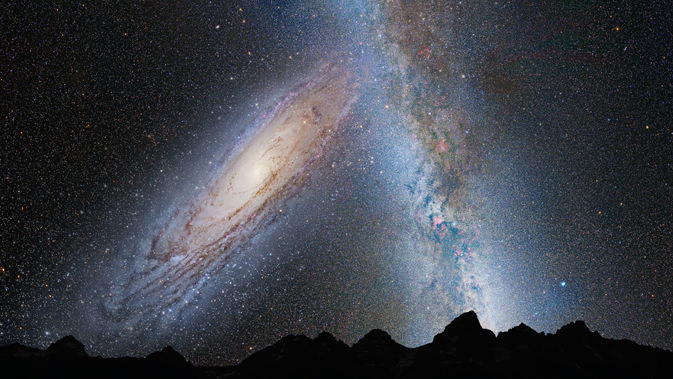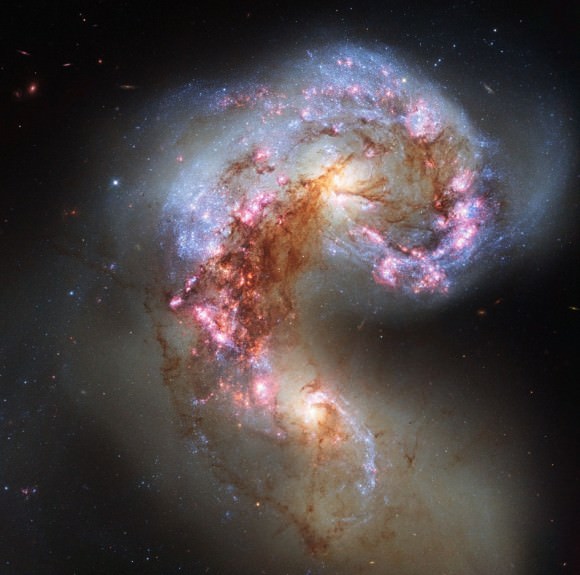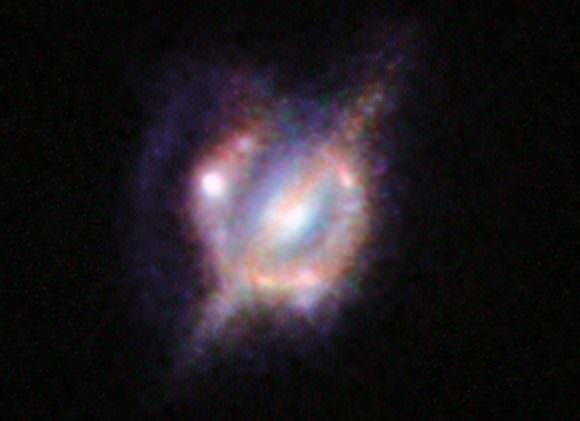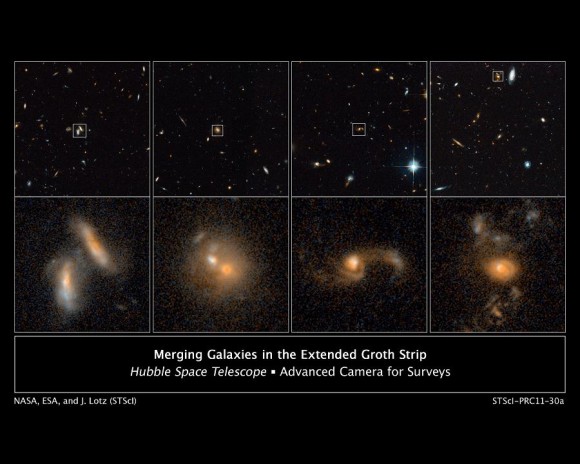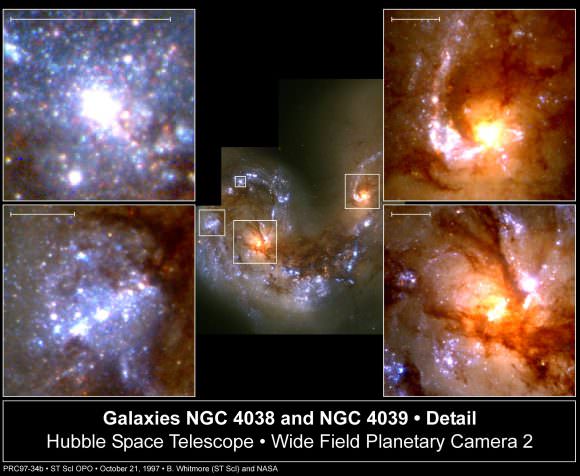Since ancient times, astronomers have looked up at the night sky and seen the Andromeda galaxy. As the closest galaxy to our own, scientists have been able to observe and scrutinize this giant spiral galaxy for millennia. By the 20th century, astronomers realized that Andromeda was the Milky Way’s sister galaxy and was moving towards us. In 4.5 billion years, it will even merge with our own to form a supergalaxy.
However, it seems astronomers were wrong about the Andromeda galaxy in one major respect. According to recent study led by a team of French and Chinese astronomers, this giant spiral galaxy formed from a major merger that occurred less than 3 billion years ago. This means that Andromeda, as we know it today, is effectively younger than our very own Solar System, which has it beat by about 1.5 billion years!
The study, titled “A 2-3 billion year old major merger paradigm for the Andromeda galaxy and its outskirts“, recently appeared in the Monthly Notices of the Royal Astronomical Society. Led by Francois Hammer, the Principle Investigator of the Galaxies, Etoiles, Physique et Instrumentation (GEPI) department at the Paris Observatory, the team included members from the Chinese Academy of Sciences and the University of Strasbourg.
For the sake of their study, the relied on data gathered by recent surveys that noted considerable differences between the Andromeda and Milky Way galaxies. The first of these studies, which took place between 2006 and 2014, demonstrated all Andromeda has a wealth of young blue stars in its disk (less than 2 billion years old) that undergo random motions over large scales. This is contrast to the stars in the Milky Way’s disk, which are subject only to simple rotation.
In addition, deep observations conducted between 2008 and 2014 with the French-Canadian telescope in the Hawaiian Islands (CFHT) indicated some interesting things about Andromeda’s halo. This vast region, which is 10 times the size of the galaxy itself, is populated by gigantic currents of stars. The most prominent of which is called the “Giant Stream”, a warped disk that has shells and clumps at its very edges.
Using this data, the French-Chinese collaboration then created a detailed numerical model of Andromeda using the two most powerful computers available in France – the Paris Observatory’s MesoPSL and the National Center for Scientific Research’s (CNRS) IDRIS-GENCI supercomputer. With the resulting numerical model, the team was able to demonstrate that these recent observations could be explained only by a recent collision.
Basically, they concluded that between 7 and 10 billion years ago, Andromeda consisted of two galaxies that had slowly achieved a encountering orbit. After optimizing the trajectories of both galaxies, they determined that they would have collided 1.8 to 3 billion years ago. This collision is what gave birth to Andromeda as we know it today, which effectively makes it younger than our Solar System – which formed almost 4.6 billion years ago.
What’s more, they were able to calculate mass distributions for both parent galaxies that merged to formed Andromeda, which indicated that the larger galaxy was four times the size of the smaller. But most importantly, the team was able to reproduce in detail all the structures that compose Andromeda today – including the bulge, the bar, the huge disk, and the presence of young stars.
The presence of young blue stars in its disk, which has remained unexplained until now, is attributable to a period of intense star formation that took place after the collision. In addition, structures like the “Giant Stream” and the shells of the halo belonged to the smaller parent galaxy, whereas the diffuse clumps and the warped nature of the halo were derived from the larger one.
Their study also explains why the features attributed to the smaller galaxy have an under-abundance in heavy elements compared to the others – i.e. it was less massive so it formed fewer heavy elements and stars. This study is immensely significant when it comes to galactic formation and evolution, mainly because it is the first numerical simulation that has succeeded in reproducing a galaxy in such detail.
It is also of significance given that such a recent impact it could have left materials in the Local Group. In other words, this study could have implications that range far beyond our galactic neighborhood. It is also a good example of how increasingly sophisticated instruments are leading to more detailed observations which, when combined with increasingly sophisticated computers and algorithms, are leading to more detailed models.
One can only wonder if future extra-terrestrial intelligence (ETI) will draw similar conclusions about our own galaxy once it merges with Andromeda, billions of years from now. The collision and resulting features are sure to be of interest to anyone advanced species that’s around to study it!
Further Reading: Paris Observatory, Monthly Notices of the Royal Astronomical Society ![]()
![]()


